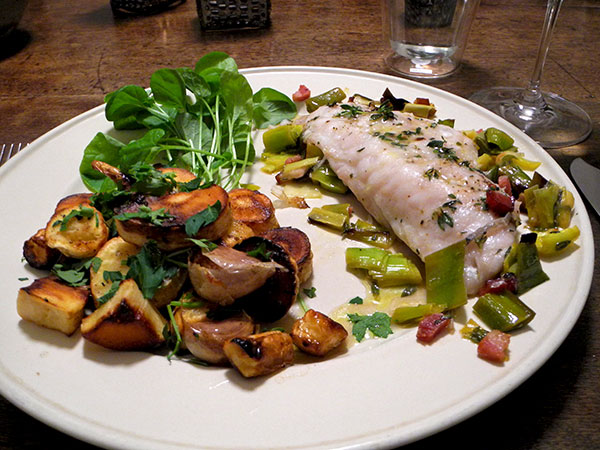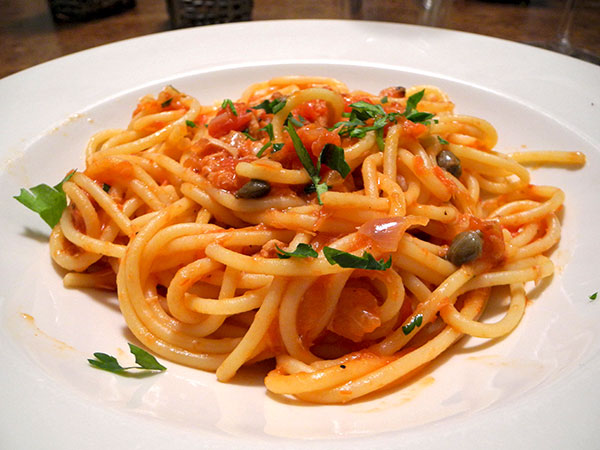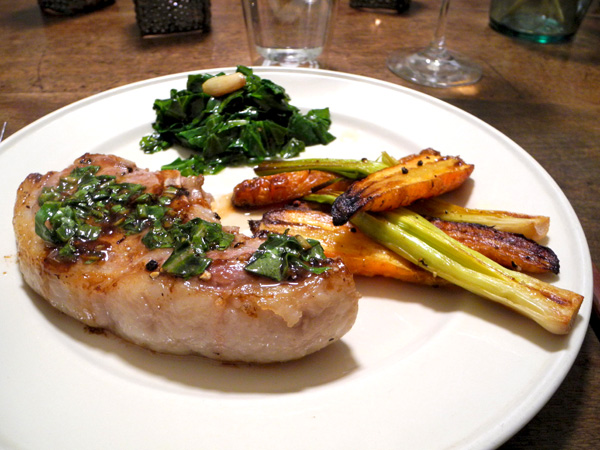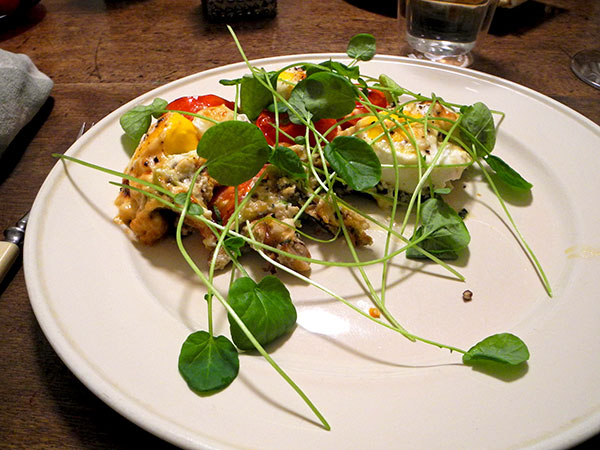Memory and my own documentation suggests that last night’s meal appears to be only my second exposure to Tilefish, in my kitchen, or possibly anywhere else, and I can’t understand why this delicious fish has been such a stranger.
I don’t think the species is very well known here, and it may have a narrow harvest window, but I recommend the fish for its flavor above all else, and for the fact that it remains a very good bargain. Tilefish has a mild, sweet flavor, apparently shaped by what it largely feeds upon at the bottom of the Continental Shelf, and that includes crab, shrimp, and snail.
The fact that Tilefish catches, off Long Island at least, seem to get high marks for sustainability is an additional encouragement, and the fish that we bring home all comes from small boats, not factories.
I am assuming that the Golden Tilefish, or Lopholatilus chamaelonticeps, pictured below, is the species whose fillets I purchased at the Greenmarket on Friday:
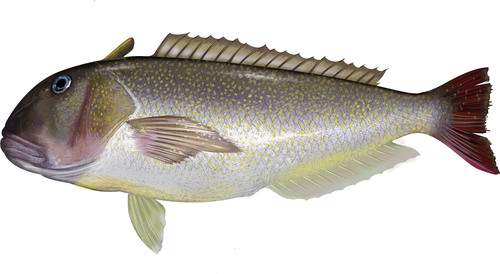
- two leeks from Lucky Dog Organic, sliced, and some thick, country-style bacon from Millport Dairy, chopped both tossed with olive oil, spread in an oven pan, roasted at 425º for 10 minutes, after which a tablespoon of thyme leaves and 1/4 cup of white wine were added, the pan returned to the oven for 20 minutes more, before two seasoned Tilefish fillets from Pura Vida were placed in it, brushed with olive oil, and all once again placed in the oven until the fish was done, removed and garnished with more thyme
- parsnips from Lucky Dog Organic, scrubbed and cut into 1/2″ slices, tossed with olive oil and salt, a few unpeeled cloves of garlic, also from Lucky Dog Organic, spread in a single layer on an unglazed ceramic oven pan, dotted with butter (yeah, that process was a little dainty), roasted at 425º, seasoned with a little more salt and pepper, sprinkled with parsley from Eataly
- upland cress from Two Guys from Woodbridge, splayed
- the wine was a French white, a Sancerre, Somme Doré 2013
- the music was Mahler’s 7th, Solti, Chicago
[second image from Mid-Atlantic Fishery Management Council]
